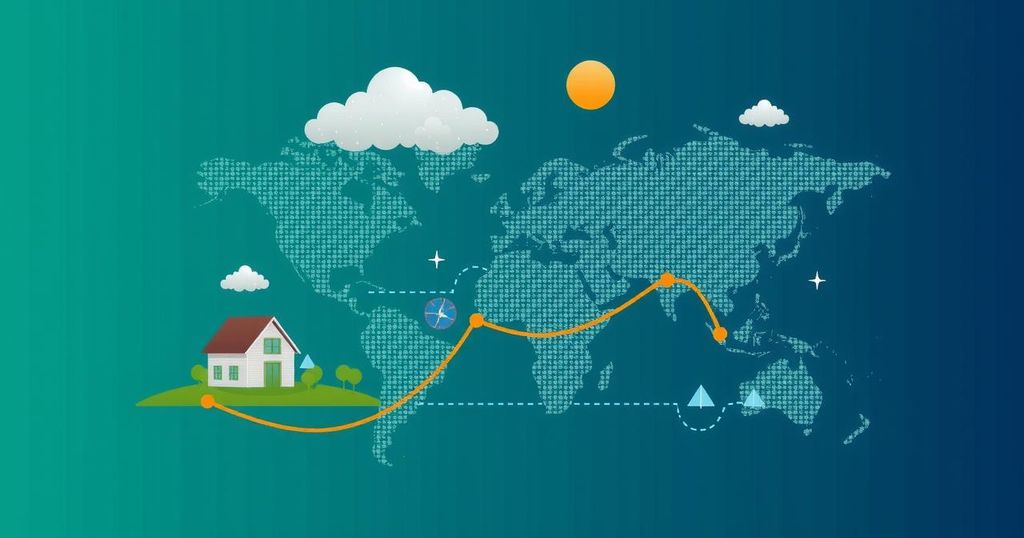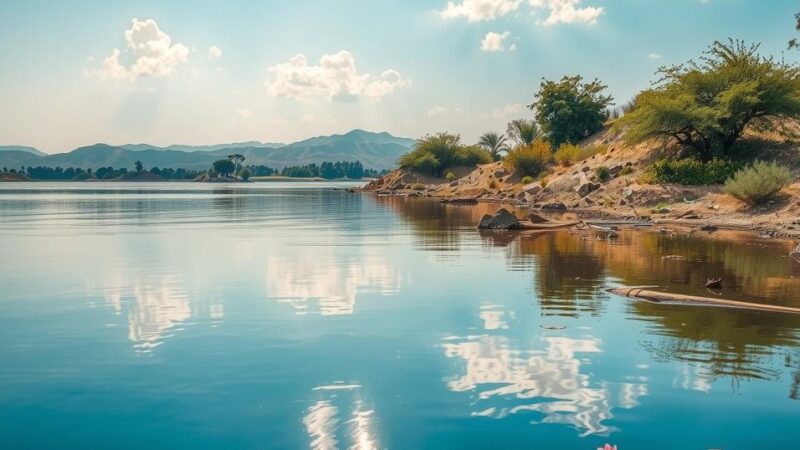Climate change is significantly impacting the insurance market, prompting reassessment of risk models and coverage strategies. In 2023, natural disasters caused $120 billion in losses, with increasing extreme weather events noted. Brazil is experiencing heightened disaster risk, necessitating changes in insurance practices and encouraging investment in sustainable technologies. Insurers face challenges in pricing policies accurately while navigating regulatory pressures for climate responsibility, all amid a market that is still functioning adequately. The call for improved risk evaluation and educational outreach remains paramount as the sector adapts to these new realities.
The insurance market faces growing challenges due to climate change, which has altered the landscape of risk assessment and coverage. The escalation in frequency and intensity of natural disasters has necessitated a reevaluation of conventional models, prompting insurers to adapt to the shifting realities of extreme weather. For instance, in the first half of this year alone, natural disasters resulted in losses totaling $120 billion globally, with 68% attributed to extreme weather phenomena such as storms, floods, and wildfires, according to reinsurer Munich Re. Notably, Brazil, a country historically less impacted by calamities, is witnessing a rise in disaster-related damages, exemplified by the recent floods in Rio Grande do Sul that cost nearly R$6 billion. In 2023, Latin America endured 27 disasters leading to $5.1 billion in insured losses and approximately $16 billion in economic damages, as reported by the Swiss Re Institute. Data indicates that extreme weather events are responsible for 76% of global insured losses, with significant incidents including severe storms in the United States and flooding in Dubai. Karsten Steinmetz, CEO of Munich Re, remarked on the difficulty in predicting future losses, especially with unpredictable events such as Hurricane Milton, which, despite its size, caused less damage than initially forecast. The insurance industry recognizes the need for a revised approach to risk evaluation. Fred Knapp, president of Swiss Re Brazil and Southern Cone, emphasized the importance of education for brokers and clients regarding these changes. He noted that as climate change continues to introduce unprecedented risks, insurers must analyze new exposures, such as potential landslides, and develop more targeted risk assessment strategies. Moreover, extreme weather events are leading to higher insurance premiums, evidenced by a 2% increase in property risk insurance rates across Latin America and the Caribbean in early 2024. This rise has been significantly influenced by climatic disasters in Brazil, which have compelled insurers to modify their underwriting criteria and expand awareness of the inadequate insurance coverage. As highlighted by Mapfre officials, insurers are facing regulatory expectations to invest in sustainability and climate-conscious initiatives. Consequently, Brazil’s Superintendence of Private Insurance has implemented a Sustainability and ESG Risks Standard that mandates the incorporation of sustainability risks across various business operations. In response to these challenges, Guy Carpenter introduced an advanced predictive modeling tool for climate risk in August, leveraging extensive data to forecast potential financial losses due to climate-related disasters. Several insurers have already adopted this innovative tool, demonstrating a proactive approach to addressing emerging risks. Despite the rising incidents of climate-related challenges, the Brazilian insurance market remains comparably stable, as noted by Dyogo Oliveira, president of the National Confederation of Insurers, who cited the robust handling of claims following significant disasters. Nevertheless, Oliveira stressed the need for increased insurance coverage in a country with only a small percentage of properties adequately insured against such risks. In conclusion, the evolving dynamics of climate change are reshaping the insurance sector, particularly in regions like Brazil that have traditionally avoided substantial losses from natural disasters. The increased frequency of extreme weather events necessitates a collaborative response from insurers to adapt risk evaluation methodologies, reassess policies, and enhance consumer education regarding insurance accessibility. The industry must also focus on improving coverage rates to better protect communities vulnerable to climate-related disasters.
Climate change is creating significant new challenges for the global insurance market. The rise in severe weather events is not only increasing the frequency of disasters but also elevating the scale of losses they incur. Insurers are tasked with reassessing their risk models in light of these developments, while also addressing regulatory pressures and evolving consumer expectations around sustainability and climate responsibility. As countries like Brazil experience a shift in disaster frequency, the insurance industry must adjust its strategies to remain viable and supportive to consumers amid escalating climate-related risks.
To summarize, the insurance market is undergoing a crucial transformation in response to the intensified and increasing nature of climate change. Insurers must develop new strategies for risk assessment and enhance consumer education, while navigating regulatory pressures toward sustainability. The scenario in Brazil illustrates the pressing need for improved coverage to protect against climate-induced disasters, demonstrating that the industry must be proactive in adapting to these significant risks.
Original Source: valorinternational.globo.com






